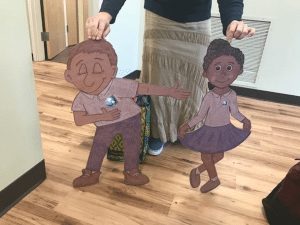Grace and Courtesy in Early Education
You will see children in Montessori schools exhibiting friendly and polite behavior with one another. This contributes to the overall peaceful environment found in these schools. But it is not coincidental. Grace and courtesy lessons are part of the curriculum.
What is Grace & Courtesy?
“Grace and courtesy” refers to the basic manners and social graces within our society. Some examples of grace and courtesy lessons are:
- Giving a friendly greeting
- Safely and quietly moving a chair
- Sitting and standing from a chair
- Carrying a work tray
- Safely carrying and handing over scissors
- Politely requesting help or assistance
- Blowing the nose quietly and politely
- Opening a door
- Interrupting by placing a hand on the person’s shoulder
- Using a placeholder to return a book to its proper place
- Reading and handling a book so as to keep it in good shape
- Handling conflict in a peaceful manner
- Taking a moment to self-calm in the peace corner
How are They Taught?

Lessons in manners and socially acceptable actions are taught through role play. First, the teacher models the grace and courtesy behavior for the class. She must give her students the exact language and precise behaviors. The presentation is explicit, and the children discuss it afterward.
During the debrief, the children will share what they noticed during the presentation. With a friendly greeting, they may notice that the person’s name was said and that eye contact and a friendly expression were given. For interrupting politely, they may notice how after placing a hand on the shoulder, the interrupter continued to wait patiently for a bit longer.
Next comes the learners’ turn to enact the grace and courtesy behavior. Often this will happen in partnerships, such as the friendly greeting. It can also be a whole group practice, as in moving chairs quietly.
What Age Learns Grace & Courtesy?
Grace and courtesy lessons begin in early education. This is primarily because young children are in a sensitive period for order. This means they want to learn the rules. Teaching them manners satisfies their natural yearning and it is most likely to be internalized.
Our youngest learners are not yet self-conscious, so they are open to trying new things. This openness further contributes to the likelihood that they will internalize the behaviors.
Why Teach Grace & Courtesy?
We measure our success in teaching social graces by whether the children incorporate the behaviors into their daily life. If they solve a playground conflict peacefully and without needing adult intervention, that is a win. If while at a restaurant they can order their food in a clear voice while maintaining eye contact, they are getting it.
Children who explicitly practice grace and courtesy lessons will establish respectful manners, clear communication, self-control, and conflict resolution skills. These are all tools that will benefit them over a lifetime.
In part, we meeting our youngest learners inborn needs to learn society’s basic structure. Moreover, we are serving them with skills that will support them in growing up to be successful adults. These lessons provide them with a means to become valued members of society for whom many doors are open.
Of course, any well mannered and socially competent individual is simply more likable. Students who develop social graces at a young age will grow up to make the world a more peaceful and pleasant place.
Looking for a Montessori school near you? Click here to visit one of our locations near you today


